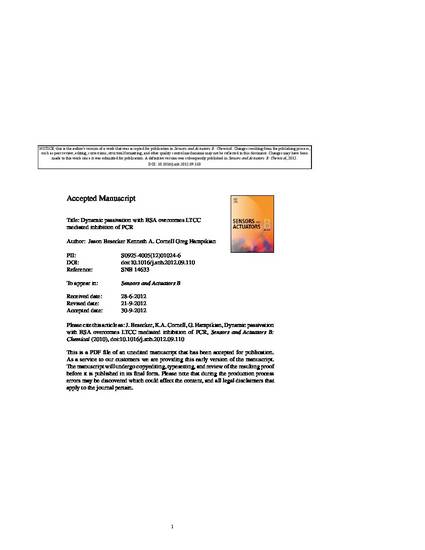
The increasing use of low temperature co-fired ceramic (LTCC) for the fabrication of biological microfluidic devices necessitates further research on LTCC biocompatibility. In this study we explore the inhibitory effect of DuPont's 951 LTCC on Polymerase Chain Reaction (PCR), and demonstrate a novel mechanism to increase biocompatibility between LTCC and PCR with the addition of a common passivation substance, bovine serum albumin (BSA). We show that DuPont's 951 LTCC binds negatively charged proteins including BSA and ovalbumin (OVA). This is a significant discovery as proteins (enzymes) are an essential component of most biological reactions, and a frequent addition to microfluidic devices. A proposed model for LTCC inhibition of PCR by enzyme adsorption is presented.
NOTICE: this is the author's version of a work that was accepted for publication in Sensors and Actuators B: Chemical. Changes resulting from the publishing process, such as peer review, editing, corrections, structural formatting, and other quality control mechanisms may not be reflected in this document. Changes may have been made to this work since it was submitted for publication. A definitive version was subsequently published in Sensors and Actuators B: Chemical, 2013. DOI: 10.1016/j.snb.2012.09.110
Available at: http://works.bepress.com/greg_hampikian/24/
